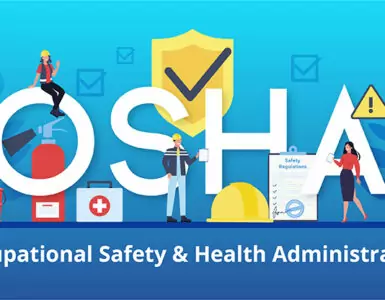A weeklong hearing that could determine the future of SeaWorld Parks & Entertainment’s world-famous killer-whale shows opened Monday with lawyers for the federal government arguing that the company’s animal trainers cannot work safely while in close contact with the world’s largest ocean predator.
“Killer whales are large, powerful and non-domesticated animals. They have the potential to cause serious physical harm or death to people who get near them,” John Black, a U.S. Department of Labor attorney, said during opening arguments in the case, which pits SeaWorld against the department’s Occupational Safety and Health Administration.
“SeaWorld’s killer-whale training program doesn’t change the essential facts that harm or death to people is possible,” Black said. “Their program doesn’t eliminate what SeaWorld itself recognizes as a calculated risk.”
SeaWorld countered that the tragedy that triggered the case — the Feb. 24, 2010, death of SeaWorld Orlando trainer Dawn Brancheau, who was pulled underwater and killed by a six-ton killer whale named Tilikum — was an isolated tragedy. SeaWorld said Tilikum, who was involved in two human deaths before Brancheau’s, had never before given any indication that he would attempt to pull someone into his tank.
SeaWorld lawyers argued that prohibiting trainers from ever again swimming with killer whales would undermine the company’s ability to care for the animals. A top company official even testified that a whale that died last fall of an illness might have been saved if trainers had been working in the water with the animal, as they had done for many years before.
Brancheau’s death “was a truly unfortunate event. It was a life-changing event to many people. It affected SeaWorld deeply,” said Carla Gunnin, a lawyer representing SeaWorld. “But I think the bigger issue is the efforts that SeaWorld had made prior to that time to ensure trainer safety.”
At issue is a citation issued by OSHA Compliance after a six-month investigation into Brancheau’s death. In it, the agency accuses SeaWorld of committing a willful safety violation for not adequately protecting its killer-whale trainers. More significantly, the agency recommends trainers never again have close contact with the animals without a physical barrier or an equivalent level of protection — something that could effectively make it impossible for trainers to return to what SeaWorld calls “water work.”
SeaWorld is challenging OSHA’s findings before an administrative-law judge. The hearing in Sanford is expected to last all week.
Only one witness was called Monday: Kelly Flaherty Clark, curator of animal training at SeaWorld Orlando. A veteran manager in charge of all animal-training operations at the Central Florida marine park, Flaherty spent more than four hours under questioning, including direct queries from Judge Ken S. Welsch, who is overseeing the proceedings.
Much of the day’s back-and-forth centered on how SeaWorld’s killer-whale trainers themselves are trained. Trainers are taught to recognize aberrant behavior, or “precursors,” from the whales that might indicate a potentially dangerous situation is coming — and they are expected to react accordingly.
OSHA, which noted that trainers are required to sign a quasi-waiver recognizing the inherent risk of working with killer whales, called it a woefully thin line of defense.
“SeaWorld trains its trainers how to recognize and how to avoid potential risk. And then, in effect, it tells them, ‘Be careful,'” Black said.
Black argued that the approach leaves “gaps” through which trainers are exposed to danger. They might, for instance, fail to observe a negative precursor or they might make a mistake while reacting to it in real time. The agency also argued that trainers could be hurt without any warning at all.
“Harm could happen even if the trainer doesn’t make a behavioral judgment error, right?” Black asked Flaherty Clark at one point.
“Yes,” Flaherty Clark responded.
But SeaWorld said its training protocols were far more sophisticated than implied by OSHA. Flaherty Clark said all killer-whale trainers undergo 18 months to two years of training before they come into close contact with a whale, which she defined as within five feet. They also train at least three years before they directly interact with the animals.
The company noted that multiple trainers are involved in every interaction — including a “control trainer” working directly with the animal and a “spotter trainer” observing the entire interaction and acting as a second set of eyes for negative precursors. It said the whales themselves also undergo training to encourage desirable and safe behaviors, which it said goes “hand-in-hand” with the instructions given to the trainers.
The company didn’t dispute that there are risks inherent to a killer-whale trainer’s job. But it said mistakes are rare.
“The frequency of a trainer making a bad call or missing a behavioral cue is minimal,” Flaherty Clark said. “In 25 years, I’ve reviewed one behavioral incident that did not show something that I would have done differently, that there weren’t behavioral cues.”
That one incident, Flaherty Clark said, was Brancheau’s death.
Tilikum had been involved in two other human deaths before Brancheau was killed: the 1991 killing of a trainer at a British Columbia facility, and the 1999 killing of a man who sneaked into SeaWorld Orlando’s killer-whale enclosure after hours. As a result, the company had developed a separate set of protocols for working with the animal, which included prohibiting anyone from getting in the water with him.
But trainers were allowed to work with Tilikum from shallow underwater ledges built into the sides of the park’s pools — as Brancheau was doing when she was pulled into the water.
“Tilikum had never given us any indication that he would pull somebody into the water with him,” Flaherty Clark said.
Another important point of contention that emerged Monday was whether OSHA’s recommendation that trainers be protected at all times by a physical barrier should apply only to their work during public performances or at all times.
OSHA said its citation applies only to work during performances. But SeaWorld said it is impossible to draw a line between show behaviors and other behaviors, because so much of the work overlaps. Flaherty Clark noted that trainers will often use performances to continue training whales on specific behaviors that are necessary for certain husbandry procedures, such as obtaining gastric samples.
It’s a crucial point, because SeaWorld can better argue that OSHA’s recommendations are untenable if it can show that they would interfere with medical procedures or other husbandry work.
The concern about the effect on husbandry led to one of the day’s most surprising claims: Flaherty Clark testified that she thinks a whale that died of an illness last year might have been saved if trainers had been working with the animal in the water. She said trainers might then have noticed sluggishness or other aberrant behavior in the whale, a 25-year-old female named Kalina, even before it was diagnosed by veterinarians and before it had progressed to a point beyond saving the animal.
“We would have picked up on it if we’d been in the water with her,” said Flaherty Clark, who choked up while discussing the whale. “I think we might not have lost Kalina if we were able to be as close with her today as we were on Feb. 23rd.”
jrgarcia@orlandosentinel.com




